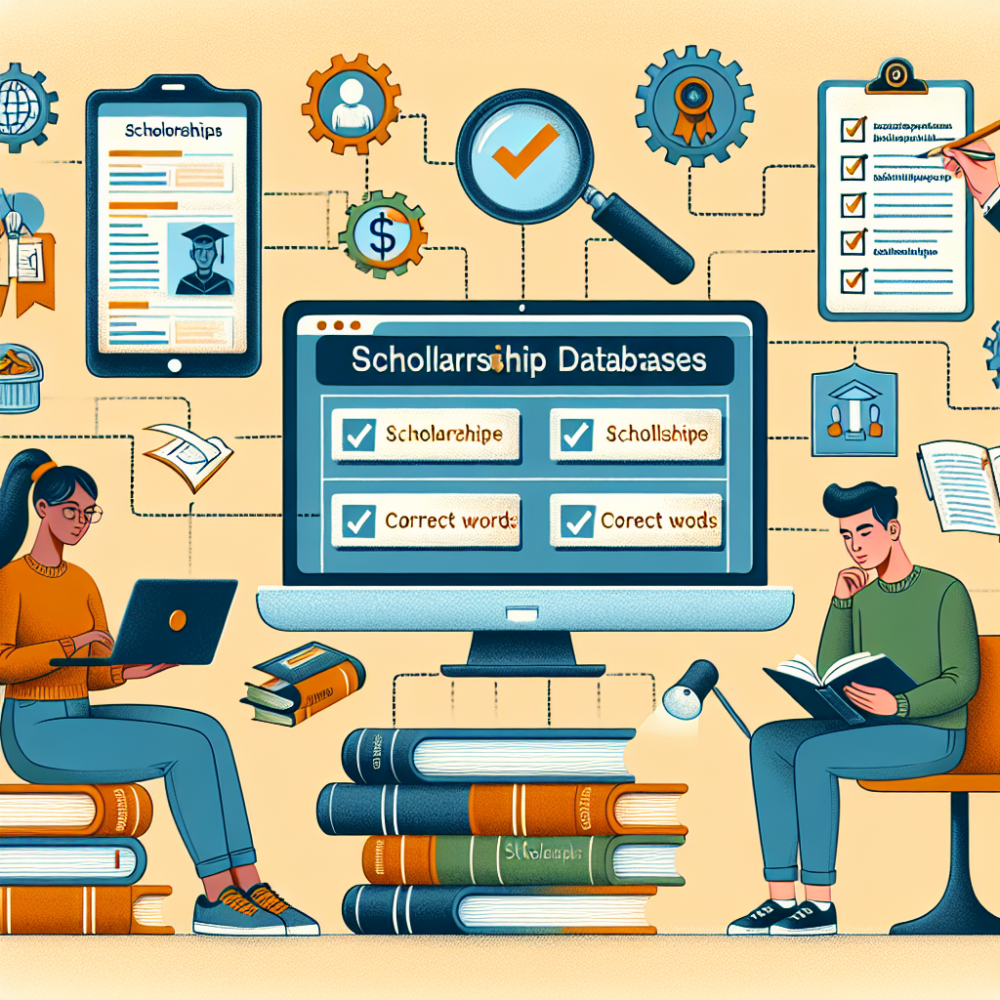
Scholarship databases can be a lifesaver for students seeking financial aid for their education. With the rising costs of tuition and other educational expenses, scholarships offer a way to make higher education more affordable. However, navigating these databases can be overwhelming. This guide will walk you through the steps to use scholarship databases effectively, making the process less daunting and more productive.
Understanding Scholarship Databases
Before diving into how to use them, it’s essential to understand what scholarship databases are. These are online platforms that compile various scholarship opportunities from different sources. They may include awards from colleges, private organizations, non-profits, and government entities. Some popular scholarship databases include Fastweb, Scholarships.com, and Cappex.
Advantages of Using Scholarship Databases
- Comprehensive Listings: They provide an extensive list of scholarships all in one place.
- Filter Options: Most databases allow users to filter scholarships based on criteria such as major, school year, ethnicity, interests, and more.
- Time-Saving: Instead of searching through multiple websites or institutions individually, these databases consolidate information.
- Regular Updates: Many scholarship databases continually update their listings with new opportunities.
Disadvantages of Using Scholarship Databases
- Information Overload: The sheer number of scholarships can be overwhelming.
- Scams and Spam: Not all scholarships listed may be legitimate; some might even lead to spam emails if you’re not careful.
- Competition: Popular databases mean high competition for listed scholarships.
Now that we have a basic understanding let’s move on to effective strategies for using these tools.
Steps for Effective Use
Step 1: Identify Your Needs and Goals
Before jumping into any database:
- Clarify Your Objectives: Are you looking for full-tuition scholarships or just something to cover books and materials? Knowing this will help narrow your search.
- Understand Eligibility Requirements: Different scholarships have different requirements—some based on academic performance while others might focus on extracurricular activities or community service.
Step 2: choose reputable databases
Not all scholarship databases are created equal:
Popular Choices:
- Pickascholarship – Offers a wide range of scholarships filtered by various criteria
- Fastweb: Offers a large selection of scholarships filtered by various criteria.
- Scholarships.com: Another extensive database with user-friendly filters.
- Cappex: Known for its ease of use and comprehensive listings.
College-Specific Databases: Many colleges have their own portals listing awards specifically available to their students.
Local Listings: Don’t overlook local libraries or community centers; they often have information about regional scholarships that might not be listed in national databases.
Step 3: Create a Profile
Most reputable scholarship databases require users to create profiles:
Complete Your Profile Thoroughly:
- Personal Information: Full name, birthdate, etc.
- Educational Background: Current grade level, GPA (if applicable), intended major.
- Extracurricular Activities: Clubs, sports teams, volunteer work.
- Financial Information: Some scholarships require this if they are need-based.
Be Honest but Strategic:
- Highlight your achievements but avoid exaggerating your accomplishments as many organizations verify details before awarding funds.
Step 4: Use Filters Wisely
Filters can save time by narrowing down relevant opportunities:
Academic Filters:
- Choose based on GPA requirements or standardized test scores where applicable.
Demographic Filters:
- Look for filters related to ethnicity, gender-specific awards (like those aimed at women in STEM), or awards targeting first-generation college students.
Interest-Based Filters:
- Some scholarships cater specifically to certain majors or hobbies (e.g., music lovers’ scholarships).
Geographic Filters:
- Filter by location if you prefer local opportunities over national ones due to lesser competition.
Step 5: Organize Your Search Results
Once you have a list of potential scholarships:
Create a Spreadsheet or Database:
- Include columns like Scholarship Name, Amount Offered, Deadline Date, Eligibility Criteria, Required Documents (e.g., essays).
Prioritize Based on Deadlines and Requirements
- Sort your results so that impending deadlines come first; this ensures timely applications without last-minute rushes.
3 . Review Criteria Carefully
– Pay close attention every eligibility requirement & understand what exactly needed apply successfully no wasting valuable time resources unsuitable matches .
Step 6 Prepare Strong Applications
After shortlisting relevant options :
Tailor Application Essays :
– Customizing each essay specific award increases chances success generic one-size-fits-all approach rarely effective .Collect Necessary Documents :
– Keep copies transcripts , recommendation letters other required paperwork ready submit without delay .Proofread Application thoroughly before submission it represents applicant professionalism attention detail .
Step Follow Up Regularly
Even after submitting applications :
Monitor Email Updates :
– Frequently check inbox including spam folder notifications from organizations they may request additional information clarification .Keep Track Deadlines :
– Some require periodic updates progress reports ensure compliance maintaining eligibility standards ongoing basis throughout term funding cycle .Being Persistent Patient
Securing financial aid competitive endeavor :
– Don’t discouraged initial rejections successful applicants often apply multiple before finding right match persistence key success story many scholars who eventually secured significant aid packages covering substantial portion educational expenses allowing focus academics growth rather financial stress burden .
By following above steps systematically utilizing available resources effectively students increase likelihood discovering suitable opportunities easing path towards achieving dreams aspirations higher education journey equipped valuable tools tips ready tackle world possibilities empowered knowledge confident capable future leaders innovators change-makers difference communities beyond .
















